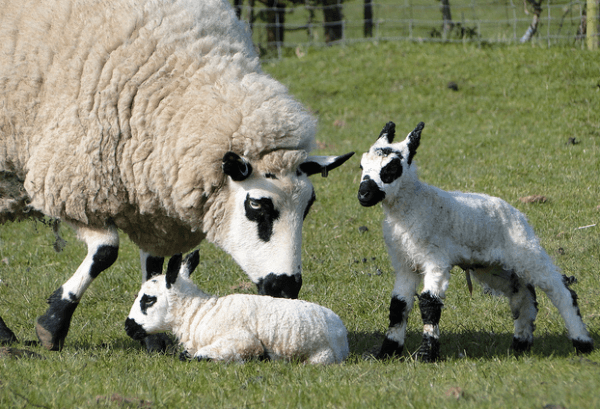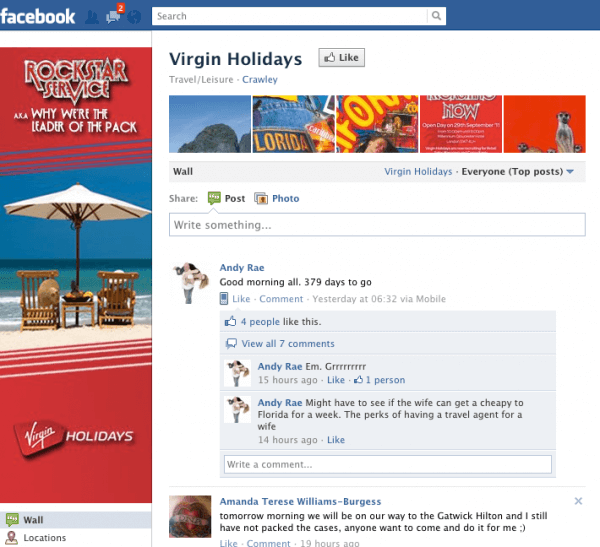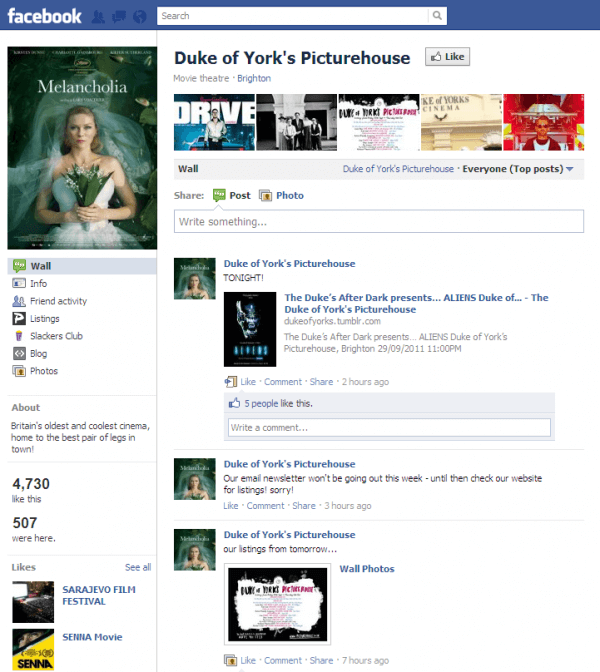6 key questions to ask about how a brand uses social media
 I work in the travel industry which, most of the time, seems like a great place to be for a digital marketer. It lends itself to rich, original content and has allowed the pioneering (but not always dominant) brands to develop online in ways never before possible with traditional media (think of brands such as Travel Zoo and Trip Advisor).
I work in the travel industry which, most of the time, seems like a great place to be for a digital marketer. It lends itself to rich, original content and has allowed the pioneering (but not always dominant) brands to develop online in ways never before possible with traditional media (think of brands such as Travel Zoo and Trip Advisor).
On the other hand the travel industry is being squeezed from all sides, (costs are rising almost everywhere let alone in travel) whilst the industry becomes increasingly fragmented and even more competitive. It’s also an industry which has had the way it does business entirely turned on its head thanks to the wide scale adoption of the internet.
In this post, I share my experiences from our initial work with social media. The six questions I pose are those I always ask when starting out in working with a brand. So with the benefit of hindsight, I hope the questions prompt other marketers to make the right choices in their use of social media marketing. Of course, I'd be interested to learn through the questions you ask too.
Despite these challenges, the use of social media is proving successful for many brands. For example, a report by Econsultancy identified that STA travel now receives between 15-20% of its website traffic from its blog. Another good example of social media use within the travel sector is Virgin Holidays’ use of Facebook, where their emphasis is on customer service and supporting the holiday experience. Through the wall they engage with their community, respond to customer’s questions, queries and complaints. It’s important to note that whilst these established brands take the headlines and make it as case study examples in reports, smaller brands and businesses are taking value from social media too.

This raises a really important point. Absolute numbers are never a good way of quantifying success. If a brand builds a social community online which represents 20% or even 10% of its customer base, it doesn’t matter how many likes or followers that actually equates to, that brand can now talk directly to a large percentage of its customer base in a very conversational manner. Put another way; whether a brand’s customer base is measured in the hundreds or tens of thousands, social media can help the majority of brands to better communicate with their audience.
Take the Half Moon pub in Putney; 18 months ago the music venue was facing closure, to be reopened as a gastro pub. Thanks to a big community effort and a 6000+ group on Facebook, a last minute decision was taken to save the iconic music venue. It now uses its Facebook presence as an outreach and awareness tool for its upcoming events and gigs. There’s also the often cited Duke of York Picturehouse in Brighton which has built up a reputation as a small business using social media to improve awareness and footfall to its offline business.

Where to start with social media marketing?
At the risk of jumping too far ahead, let’s focus on where a brand should start. I’m currently looking at introducing social media to a brand currently with no social presence. I know from using social media with other brands, that there are a lot of questions to ask and a vital first step is to get to know your customers better. Much better. Demographics are not enough. Scale and resources available will impact the extent to which a brand can do this, but even the smallest of brands can carry out a simple research campaign which will help answer some important questions that need to be considered.
For example:
1. What are your customer’s online behaviour? What do they spend their time doing online and where does this activity take place? Are they members of forums, do they read news and media sites, are they in private networks or on open platforms like twitter and facebook? Are they content producers or consumers?
2. What are my typical customer profiles? If you have an online and offline presence you’ll need to think about your online customer profiles. Do they differ from the types of people that buy from you offline. If so, how?
3. How will we reach customers with this profile? Which types of sites and influencers will we use to reach new customers online that have a similar profile or persona to that of your current online customers?
4. What type of content and online experiences are your customers are looking for and why? Do they know? Along which point of your customer journey is social media going to play a role? E.g. is it to drive awareness, aid customers during the buying process or improve customer support post sale?
5. Where’s the opportunity? This is the intersection between opportunity for the brand and the customer. Do your current and potential customers have a need that’s not being fulfilled? How can the brand seamlessly use the interaction and engagement in social media to turn social media engagement into leads and sales.
6. What are you customers saying about you and your competition and/or your marketplace? Listening to your audience is worthy of its own dedicated post. However it’s important to point out the value that social media and brand managers can take from listening to the conversations your brand is already a part of.
Answering these questions can help two fold. Firstly it can identify where a brand’s true opportunities lie (I’m assuming a few wider environmental considerations have been made here). Secondly, it can save a lot of wasted time and resource and, perhaps more importantly, it can stop bad decisions being made which will tarnish the reputation of social media and place future projects in jeopardy.
There are a lot of other considerations to think about at this early stage and this is by no means an exhaustive list. Neither does good research guarantee a successful project. However, it is a very necessary first step, helping to identify the full scope of taking a brand social and also helping to achieve buy-in from other stakeholders as they become involved from day one.
There’s a difference between a community and an online audience which was brilliantly summed up by Meg Pickard recently. Understanding your intended audience’s motivations will help you create a community and that’s a great place to start for any brand.

Many thanks to
Jon Paget for sharing his advice and opinions in this post. Jon works in social media, community development and online PR strategy for a number of activity, specialist and luxury travel brands at TUI Travel PLC.
Follow Jon on twitterPhoto credit






 Many thanks to
Many thanks to 



